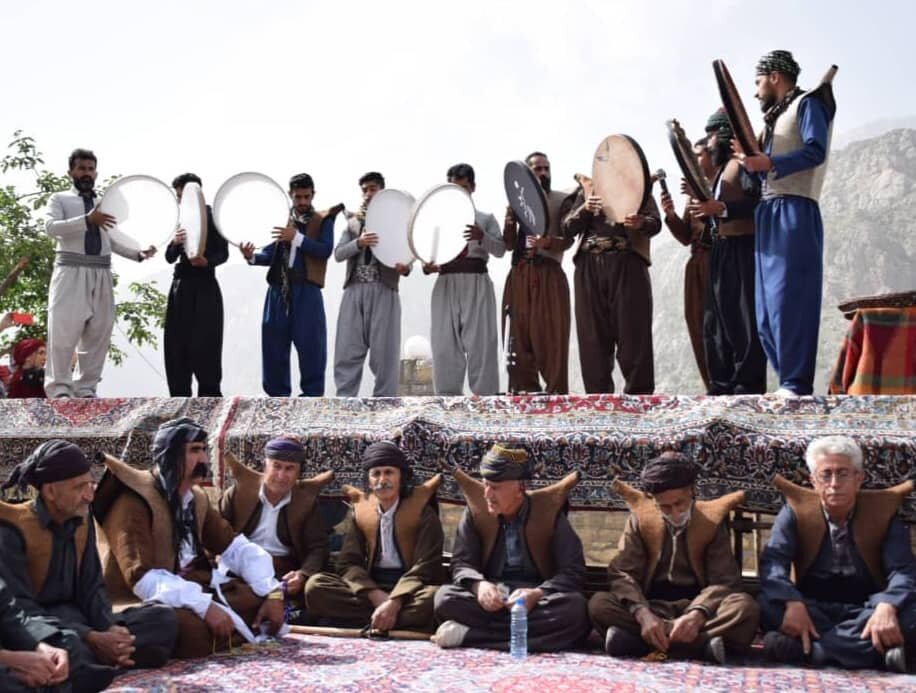Kumsai ritual observed in UNESCO-designated Uramanat

TEHRAN –On Friday, the ancient ritual of Kumsai was held in the UNESCO-designated Uramanat, Kordestan province, western Iran.
A large crowd of foreign and domestic tourists interested in learning more about this traditional ritual attended the ceremony, which was held near the shrine of Pir-e Shaliar, a local tourism official has said.
As part of the ceremony, tourists were treated to an exhibition of regional handicrafts and souvenirs, daf playing, folk music performance, and a poetry reading, Mansour Mehrzad explained on Saturday.
Each year in early May, the Kumsai ceremony is held in this UNESCO-designated region uniquely and magnificently, the official added.
Kumsai in the local language is composed of the words ‘ku’ for assembly and ‘msai’ for learning, he noted.
It is narrated that as a result of the harsh nature of Uramanat and the culture of nomadism in the region, people left the village in the middle of spring every year and migrated to other parts of the region for a period of more than six months, he mentioned.
Having been away from each other for a year, they decided to organize a meeting and a ceremony before reuniting, to divide the necessary social affairs among themselves and to delegate them to qualified people, and to prepare for the migration, he stated.
Moreover, the ceremony is also held to commemorate Pir-e Shaliar, a legendary folk figure for Iranian Kurds, who is warmly remembered for his allegedly magical healing qualities and mojo that locals believe could populate the land with livestock and crops in times of trouble, he added.
The legend says that Pir-e Shaliar magically cured ‘Shah-Bahar Khatoun’ the beloved daughter of the king of Bukhara so that he was rewarded with getting married to the girl.
Stretched on the slopes of Sarvabad county at the heart of the Zagros Mountains and shared between the provinces of Kordestan and Kermanshah in western Iran, the Uramanat cultural landscape embraces hundreds of villages, 106,000 hectares of land, and 303,000 hectares of surrounding properties.
Archaeological findings dating back about 40,000 years, caves and rock shelters, ancient paths and was along the valleys, motifs and inscriptions, cemeteries, mounds, castles, settlements, and other historical evidence attest to the continuity of life in the Uramanat region from the Paleolithic to the present time.
According to the UN body, Uramanat is an exceptional testimony to a cultural tradition of the semi-nomadic agropastoral way of life of the Hawrami people, a Kurdish tribe that has resided in the Zagros Mountains for millennia. This outstanding cultural tradition is manifested in the ancestral practices of transhumance, the mode of seasonal living in Havars, steep-slope terraced agriculture, soil and water management, traditional knowledge for planning and constructing steeply terraced villages, and rich diversity of intangible heritage, all reflecting harmonious co-existence with nature.
ABU/AM
